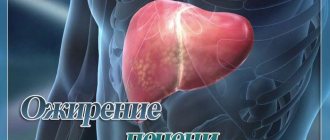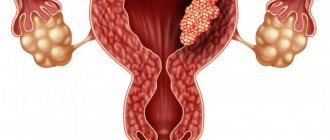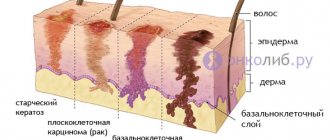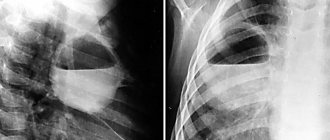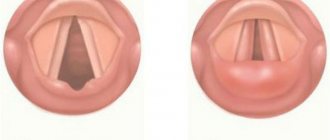In chronic renal failure, the patient's body begins the process of self-poisoning. This condition is called uremia. And those who want to understand what uremia is should know that a malfunction in the body occurs against the background of impaired protein metabolism. In this case, all nitrogenous wastes settle in the patient’s body, while in a healthy person they are excreted through the kidneys along with urine. At the same time, along with disruption of protein metabolism, acid-base and osmotic balances are also disturbed.
Important: healthy kidneys function as a regulator of osmotic pressure, and also regulate water and electrolyte balance, control the composition of salts in the body and remove toxins. When, due to kidney disease, the kidneys cannot cope with their function, a high concentration of toxins that are not removed from the body changes the chemical composition of a person’s blood for the worse. The patient develops azotemic uremia.
Causes
The development of the disease is quite complex, since the cause of the disease can be absolutely any pathology in the kidneys. And there are more than 100 of them. In the future, these diseases, if not treated in a timely manner, lead to kidney failure. The kidneys begin to work much worse and do not perform most of their direct functions. Subsequently, metabolic products and various toxins begin to accumulate in a person. These types of harmful substances accumulate in the body and significantly worsen the already less than ideal state of health.
The causes of uremia depend on the form of the disease. Occurs if:
- damage to kidney structures;
- poisoning with toxins;
- burns and shock conditions;
- massive destruction of red blood cells, with the release of hemoglobin out. Occurs when manipulating a blood transfusion that does not fit the group;
- septic phenomena, which quickly lead to the onset of kidney failure.
It is in such cases that we can talk about the occurrence of an acute form of uremia. Irreversible processes that lead to the decline of kidney function lead to chronic uremia.
The pathogenetic factors of the disease lie in diseases that were previously present in the kidneys - inflammation of the glomerular system of the kidneys, inflammation of the kidney tissue, congenital nephritis, cystic formations in the kidneys.
Treatment[ | ]
See also: Hemodialysis
Hemodialysis and renal transplantation are used.
Establishing a diagnosis of chronic renal failure requires solving the issue of replacement therapy. This is dictated by two circumstances[2].
- Most patients with impaired differentiation of renal tissue are characterized by a sudden, catastrophic deterioration in the functional state of the kidneys, occurring after a period of relative stabilization of functions. Sometimes a detailed picture of uremia occurs in connection with an intercurrent disease, but in most cases the cause leading to a sharp decrease in the filtration capacity of the kidneys cannot be established.
- When a diagnosis of renal dysplasia is established and the initial phase of chronic renal failure is formed, renal transplantation is very effective, and timely prescribed hemodialysis (minimization of homeostatic disturbances until surgical treatment) creates favorable conditions for waiting and performing transplantation.
Difference between species
In medical circles, it is customary to distinguish between several forms of uremia, namely acute and chronic.
Acute uremia is characterized not only by impaired renal function, but also by various disorders throughout the human body. The concentration of various harmful substances in the bloodstream increases over time. Such substances are creatinine, urea, ammonia, indican, and some types of nitrogenous compounds. In addition, the content of chlorine, magnesium and potassium may change. As a result, there is a disturbance in the acid-base balance. It is necessary to distinguish exactly how this disease manifests itself in order to begin appropriate treatment in a timely manner. The sooner treatment begins, the greater the chance of a successful outcome of the disease, and the less likely it is to develop complications.
The chronic type of uremia is an extremely dangerous change in the renal structures of diffuse origin. This type of disease disrupts all the functional characteristics of the kidneys, and in the future this entails consequences that are extremely dangerous for human health.
Treating chronic uremia is extremely difficult and is not always possible or effective.
The appearance of the first violations
With uremia, a person is constantly thirsty
Further, the appearance of kidney and liver disorders is characteristic. These organs begin to scar and are replaced by connective tissue, which is unable to replace the original functions of the organ. The greatest risk of such changes is likely to occur with the deposition of stones in the bladder and clogging of the channels that remove toxins, with diabetes (especially nephropathy) and chronic glomerunonephritis.
In both cases, there is a disturbance in metabolism and other vital processes. Dysfunctions are divided into metabolic and hemodynamic. The latter are associated with the composition of the blood and hemolysis of red blood cells, the lack of removal of dead platelets and other blood cells. Toxins enter the blood in large quantities, the walls of blood vessels become thinner, and blood clots or bleeding may occur. Due to the cessation of platelet production, the blood stops very slowly. The pressure stops being regulated and increases even in the smallest vessels - capillaries.
Metabolic changes are expressed in nephrosclerosis. It occurs due to the deposition of a complex of potassium, calcium, fats and nutrients circulating in the blood, including protein compounds.
Symptomatic manifestations of uremia
Symptoms characteristic of uremia begin to appear gradually. After some time, the symptoms begin to become more pronounced and the patient’s well-being deteriorates significantly. Early symptoms of the disease are:
- lethargy and indifference to everything;
- manifestation of eternal drowsiness;
- brittleness and dryness of nail plates;
- pallor of the skin, and the face acquires a yellowish tint;
- the appearance on the skin of a white coating characteristic of this disease, which is somewhat similar to frost. This is a characteristic symptom of uremia. The whitish coating is the crystals of urea itself, which sweat through the skin pores;
- When a characteristic plaque appears, the skin begins to itch and itch. In cases of severe scratching, infection may occur, and in this process a purulent infection begins to join;
- manifestations of various types of hemorrhages on the skin;
- stool disorder, characterized by diarrhea with blood;
- the functioning of the brain convolutions deteriorates;
- manifestation of nausea and eruption of intestinal contents;
- persistent odor of ammonia from the oral cavity;
- weakness in the back muscles, hip joints and shoulder muscles.
This ends with anorexia manifesting itself, and the person stops taking any food. This leads to visions, seizures and coma.
Notes[ | ]
- JM Moreira, SM da Matta, AM e Kummer, IG Barbosa, AL Teixeira, ACS e Silva.
Neuropsychiatric disorders and renal diseases: an update (English).
J Bras Nefrol 2014;36(3):396-400
. The Scientific Electronic Library Online. Retrieved March 17, 2020. - ↑ 123
Pediatric nephrology / Ignatova M. S., Veltishchev Yu. E. - 2nd ed., revised. and additional - L.: Medicine, 1989. - P. 194.. - 456 p. — 60,000 copies. — ISBN 5-225-00059-2.
Possible complications
When uremia occurs, the central nervous system, and especially the brain, is most affected. The patient experiences a loss of coordination and attention, and the ability to concentrate and remember anything is impaired. In this case, hallucinations may develop. In the future, the symptoms will only worsen and will lead to the development of uremic encephalopathy, the manifestations of which will be:
- manifestation of complete indifference to what is happening;
- extremely heightened feeling of anxiety;
- loss of sensation;
- unsteadiness when walking;
- impaired speaking;
- muscle cramps.
There are cases that, against the background of the symptoms described above, uremic coma develops. Its development begins slowly, as the tissues of the kidney structures die. The patient experiences general weakness and loss of appetite. Oligouria is observed (a decrease in the excretion of the daily dose of urine) and severe swelling begins to appear on the face, arms and legs.
In addition, stool upset and eruption of intestinal contents are added. Quite often, with this development of the disease, patients complain of pain in the sternum. Shortness of breath begins to manifest itself more and more, hemorrhages occur on the skin, which is associated with the destruction of vascular structures. In addition, hemorrhages occur in the mucous membranes, internal organs, and also in the brain. The most important symptom that should sound the alarm is an ammonia odor from the mouth. If treatment is not provided in a timely manner, uremic coma occurs.
Even with normal, adequate treatment, there is no way to predict the further development of the patient’s condition. Even if the patient manages to emerge from a coma, the consequences of this pathological condition can be quite obvious, and in particular intellectual retardation. In addition, do not forget that when renal coma occurs, the percentage of deaths is very high.
When entering intensive care, the first step is to completely intoxicate the body. This is done in order to remove from the body as soon as possible those substances that the kidneys could not remove.
To do this, complete gastric lavage and intravenous administration of solutions that support and stabilize the condition.
Description of the disease
As already mentioned, uremia is a consequence of renal dysfunction of a certain origin. The kidneys stop coping with their tasks - filtering toxins and metabolic products from the blood and removing them from the body. Further, these harmful components accumulate in the bloodstream, and gradual self-poisoning increases.
- Acute shape.
- Chronic.
- traumatic injuries. The disease often accompanies extensive burns or frostbite; it occurs in patients who have been subjected to prolonged compression when the renal capillaries become clogged with discharge from damaged tissues;
- severe pathological conditions - hemolysis, acute kidney inflammation, shock, glomerulonephritis, severe hemodynamic disturbances;
- urolithiasis - when the patient experiences acute and prolonged delay in urine output, hydronephrosis, blockage of the ureter;
- renal failure is provoked by various infections: in particular, this syndrome is characteristic of hemorrhagic fever. It is often accompanied by azotemic uremia - an increase in the concentration of nitrogenous breakdown products in the bloodstream.
- prerenal – caused by pathologies outside the kidneys, diseases of other organs;
- renal – the kidney filtration system itself is mainly affected;
- postrenal - caused by difficulties in the removal of fluid from the urinary tract.
Chronic uremia can develop over a long period of time, up to many years, and is caused by:
- chronic type of glomerulonephritis;
- pyelonephritis and a toxic type of nephritis;
- as a consequence of chronic renal pathologies;
- for diabetes and other systemic diseases affecting the renal parenchyma;
- in patients with chronic disorders of the heart and blood vessels.
Uremia syndrome is sometimes accompanied by a dangerous complication - urosepsis, when infection of the body with pathogenic bacteria is added to the poisoning itself. This occurs due to secondary immunodeficiency developed against the background of insufficient renal function.
Uremia is a disease that leads to disability. Group I is received by patients in the terminal phase of the disease, when the patient needs constant care due to the inability to care for himself. Group II is assigned to people with developed disorders of vital organs, Group III is assigned to patients who have relatively mild disorders of the body and some contraindications to performing certain activities.
- pregnant women, since the fetus puts pressure on the bladder, leading to circulatory disorders in it;
- women during menopause;
- people leading an intense intimate life;
- the risk is high in men with prostate pathologies and in women with gynecological problems;
- bedridden patients.
It is customary to distinguish acute and chronic forms of uremia. Each of them is accompanied by characteristic symptoms.
Signs of an acute form of uremia are a decrease in the volume of urine excreted. This is due to damage to parts of the nephron by poisons. There are also signs of severe renal dysfunction, to which are added disturbances in the body’s vital functions.
In addition, the acute form of uremia causes dysfunction of internal organs, which is accompanied by symptoms such as heart rhythm disturbances, pulmonary edema, digestive and nervous system disorders.
An attack of acute uremia lasts from 5 to 10 days, but sometimes it drags on for up to a month or more. Full recovery and restoration of working capacity in most cases takes up to a year.
Chronic uremia is the outcome of many chronic kidney diseases. Patients become drowsy, apathetic and easily excitable. Their skin condition also worsens, their hearing decreases, and bleeding occurs. The disease leads to irreversible damage to the kidney.
Symptoms of uremia
Uremia is indicated by increasing symptoms of poisoning. The primary sign of uremia is lightened urine, the excretion of which increases. Laboratory tests done during this period show a decrease in the urine content of chlorides and urea retained by the body. Gradually, the volume of diuresis decreases, and the retention of nitrogenous waste provokes an increase in the level of nitrogen in the blood.
The precomatose state lasts for weeks or months and often ends in uremic coma. Primary symptoms are observed in the stomach and intestines:
- lack of appetite;
- unquenchable thirst;
- bitter taste and odor from the mouth.
The gastrointestinal tract begins to suffer due to poisoning of its walls with ammonia salts. The patient begins to refuse food, but over time, vomiting begins to appear on an empty stomach. Some people experience bloody diarrhea.
At some point, new symptoms appear, already from the CNS (central nervous system):
- apathy;
- stiffness of movements;
- lethargy;
- severe fatigue;
- feeling of heaviness in the head;
- insomnia;
- cramps of the calf muscles;
- fainting.
With the onset of uremic coma, the respiratory system begins to suffer. Breathing becomes noisy, and the patient's deep inhalation is followed by a short exhalation. With the onset of the last stage, breathing disappears as the excitability of the respiratory center decreases.
Symptoms of uremia also manifest themselves in skin changes:
- plaque on the skin;
- itching;
- dryness and sagging skin;
- trophic ulcers.
Who may be at risk
Uremic syndrome can occur in absolutely anyone. But there are diseases that can trigger the development of uremia. These conditions are considered:
- women during menopause;
- pregnant women, because while carrying a baby, the bladder is greatly compressed, which leads to impaired blood circulation in it;
- some people who have an overly active sex life;
- the female half of the population with gynecological diseases;
- men with prostate problems;
- patients who are forced to lie down due to circumstances.
Additional signs
Uremia usually progresses gradually. Patients complain of decreased appetite, increased thirst and increasing weakness. Later other symptoms appear:
- headache;
- vomiting, nausea;
- memory impairment;
- decrease in body temperature;
- puffiness of the face;
- voluntary muscle twitching;
- physical weakness, lethargy;
- dry skin, brittle hair and nails;
- pale face;
- decreased vision and hearing;
- the appearance of a characteristic white coating on the skin due to excess urea;
- tendency to bleed;
- the appearance of ammonia odor from the mouth;
- breathing problems;
- decrease in blood pressure.
Due to impaired kidney function, toxins begin to be released through the gastrointestinal tract, which is accompanied by repeated vomiting and prolonged diarrhea. Nitrogen metabolites accumulate in tissues and begin to be released through the mucous membranes and skin, causing an inflammatory process. Due to irritation of the membranes of internal organs, complications develop in the form of colitis, uremic gastritis, and pericarditis. Intoxication syndrome disables the liver and leads to severe anemia. Patients may be in a state of lethargy for a long time, and then begin to behave nervously, excitedly, or even aggressively.
Due to an increase in the concentration of uric acid and ammonia, unbearable skin itching occurs. When scratching, tissues are injured and a secondary infection may occur. In advanced forms of uremia, ulcerative defects occur. This condition can be accompanied by a dangerous infectious process, which for people with diabetes and weakened immunity often ends in death or bleeding - both external and internal.
Against the background of uremia, the fragility of blood vessels increases, and the function of hematopoiesis may be inhibited. Toxic compounds begin to be released through the salivary glands, the mucous membrane of the respiratory tract, and provoke the development of infectious diseases: tracheitis, laryngitis, stomatitis, bronchitis. The terminal stage is accompanied by a decrease in blood pressure.
Diagnosis
If you suspect a kidney problem, you should contact a specialist, a urologist, who will prescribe the appropriate tests. If there is the slightest suspicion of uremia, a biochemical blood test is prescribed to determine the important components - creatinine and urea.
A general urine test is prescribed in order to identify the causes that led to the onset of uremia. If there is a large amount of salts in the analysis, the cause of uremia may be the development of urolithiasis and the formation of stones in the renal structures. When bacteria were detected in a urine test, the cause of uremia was pyelonephritis, a complicated etiology.
In order to definitely identify the cause of uremia, an ultrasound examination is prescribed to effectively identify the cause.
Therapy methods
The technique, which is aimed at treating uremia, takes a fairly long, long period. This is a rather complex process that consists of several techniques:
- therapeutic regimen;
- proper balanced nutrition;
- use of medications;
- purification of blood from various types of toxic substances using hemodialysis or plasmaphoresis.
In complex and too advanced cases, when methods of therapeutic manipulation do not produce an effect, surgical intervention is prescribed, which consists of transplanting the affected organ.
When using medications, much attention is paid to rehydration and detoxification therapy. The patient is administered glucose solutions and saline. The volumes of fluid that are infused into a patient with uremia depend on the condition of the patient.
Drugs are prescribed only to reduce the manifestations and consequences of uremia. This technique makes sense only in the initial stages of the disease.
The most effective method of treating uremia and its consequences is hardware therapy. In most cases, hemodialysis is used, which is performed using a special installation. This mechanism is a filtration device. Using the process of hemodialysis, the blood is cleansed of toxic substances that are formed in the body and deposited as a result of a violation of the direct functions of the kidney.
What are the prospects and what to do?
Uremia does not choose gender. The disease is equally dangerous for both women and men. Meanwhile, it poses a particular threat to those who are preparing to become mothers. Uremic syndrome in pregnant women is akin to a catastrophe, therefore, for people suffering from pathology of the renal system, pregnancy itself is often in question, since uremia to one degree or another already occurs. Of course, such women are registered separately, under closer attention from doctors.
For all other men and women, the outcome of the disease depends on how much the functional ability of the urinary system is affected.
Basically, the prognosis can even be called conditionally favorable, provided that glomerular filtration occurs at a rate of more than 30 ml/min. Renal replacement therapy (RRT) can help up to 65% of patients, although some will remain “tied” to hemodialysis for the rest of their lives. Some patients may be lucky if a donor kidney is found and transplanted, which will take over the task of urination.
Unfortunately, it is almost impossible to prevent the disease in advance, since there is no specific prevention. Only complex treatment, subject to timely diagnosis of uremic syndrome, can affect urine flow and prevent irreversible changes in the renal system.
Diet food
No kidney disease goes away without a properly adjusted and balanced diet. Because the treatment will bear fruit if the diet is healthy.
If uremia occurs, patients are advised to:
- eat as little protein as possible
- adding fresh juices from fruits and vegetables to the diet. They will help eliminate disturbances in the water and electrolyte balance caused by kidney failure.
- waters containing alkalis. These types of mineral waters will have a beneficial effect on the condition of the body as a whole.
Preventive actions
In order not to miss the occurrence of such a dangerous illness as uremia, it is necessary to avoid in every possible way factors that can provoke it.
It is necessary to carefully monitor your health, and in particular the health of your kidneys. You should not allow hypothermia, and go to see a specialist once every 6 months. In order to provide the kidneys with the most comfortable conditions, you need to eat a balanced diet. It is necessary to maintain a normal drinking regime, and drink drinks that are as healthy as possible, freshly squeezed. You should give preference to still water, sugar-free juices, herbal teas and green teas.
By visiting a specialist, you can avoid many problems, including the occurrence of uremia. It is necessary to do a routine examination with all specialists at least once every six months. This is necessary in order to promptly detect the slightest disturbances in the body.
Only a specialist can determine what disease is present and what treatment methods will be most appropriate.
Treatment of pathology
The main methods of treating this pathology are hemodialysis (blood purification through an “artificial kidney” device) or kidney transplantation.
Uremia requires urgent treatment. Because a person may experience a toxic coma and death. The main methods of treating this pathology are hemodialysis (blood purification through an “artificial kidney” device) or kidney transplantation.
- During hemodialysis, the machine is connected to the patient's body through a vein or artery. Blood from the patient’s body flows through a special membrane in which waste and nitrogenous compounds are deposited. The blood treated with the dialysis solution is returned back to the patient's body. A hemodialysis session can last 3-4 hours depending on the patient’s condition. Also, depending on the course of uremia, the patient is indicated from 10 to 50 hemodialysis sessions. To maintain the body during dialysis, you should follow a diet that involves increasing animal protein in the diet and limiting potassium, salt, smoked meats and marinades. A total of no more than 1 liter of liquid, including tea, soup, etc.
Important: hemodialysis is strictly prohibited for patients with oncology, paralysis of an arm or leg, mental disorders, or if the patient has internal bleeding.
- Kidney transplantation is performed if dialysis does not provide the desired effect. In this case, it is necessary to save the patient's life only by organ transplantation. As a rule, kidney transplantation is indicated for patients in the age group of 15-45 years. A transplant is also indicated for young patients, since dialysis greatly inhibits the development of a young body and psyche as well. It is worth understanding that transplanting a diseased organ can prolong the patient’s life by 10-15 years. However, in women and men over 45 years of age, organ transplantation can cause side effects such as thrombosis, cerebral vasospasm, diabetes or heart attack.
Important: you will need to fight for the viability of the transplanted organ in addition by taking lifelong or very long-term immunosuppressive therapy.


